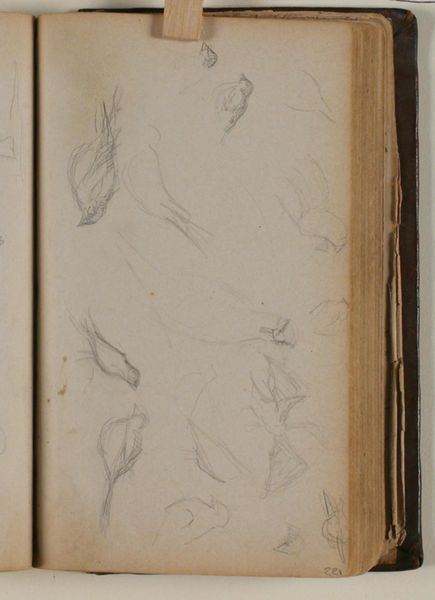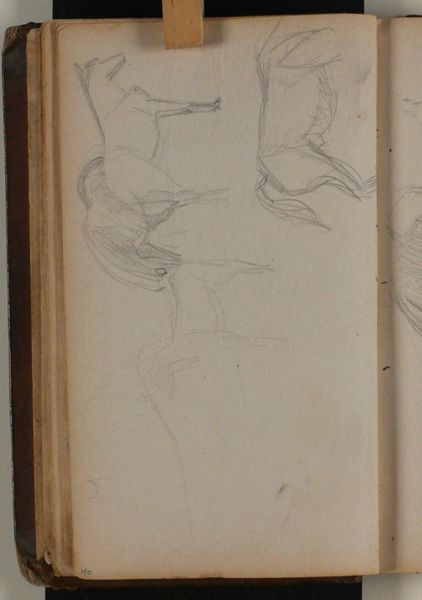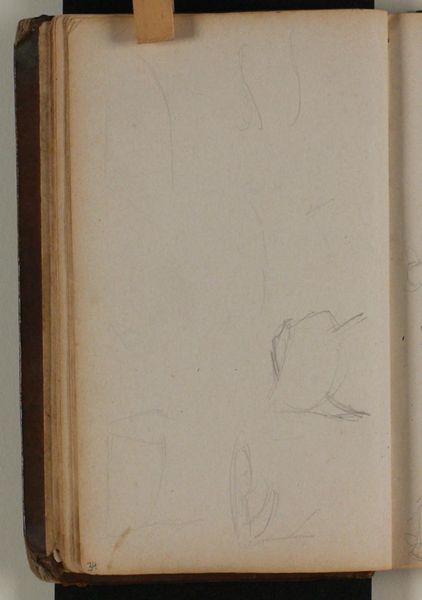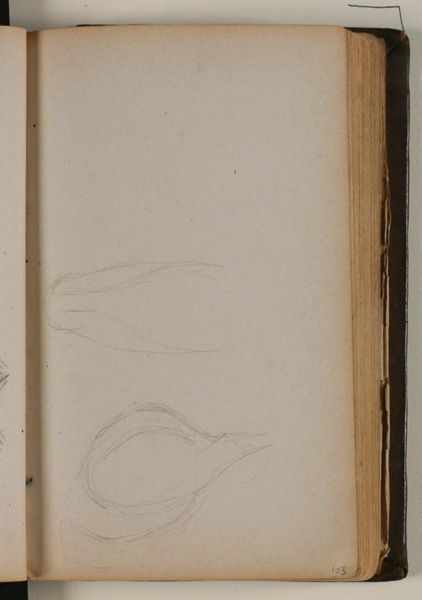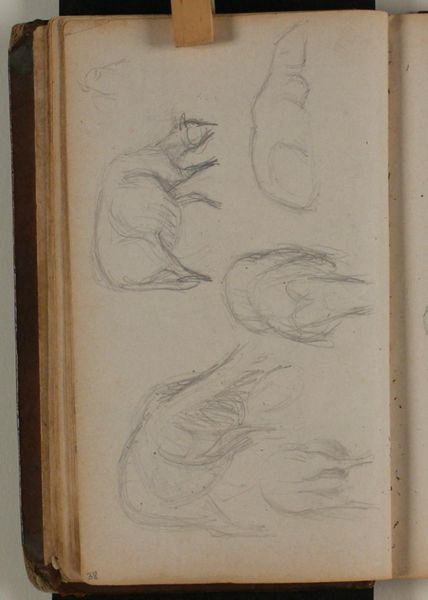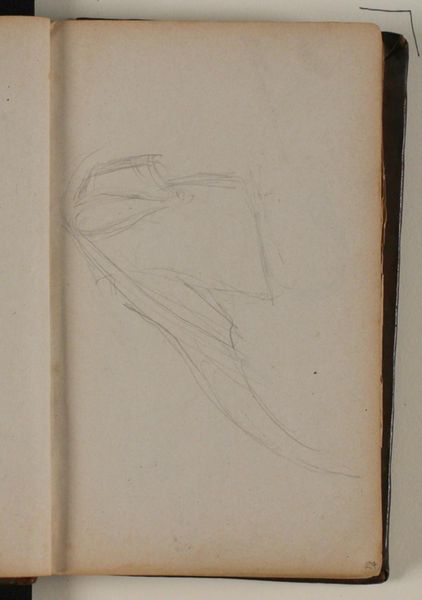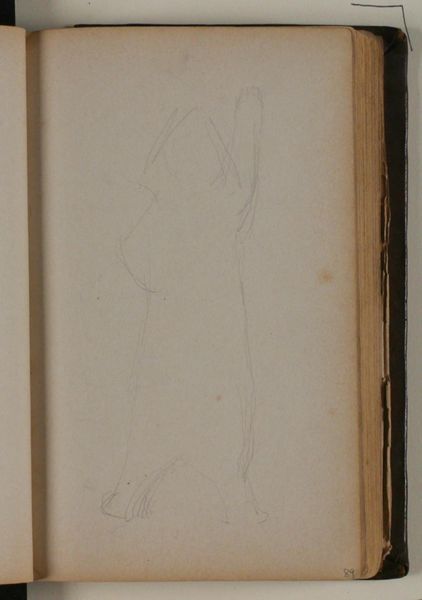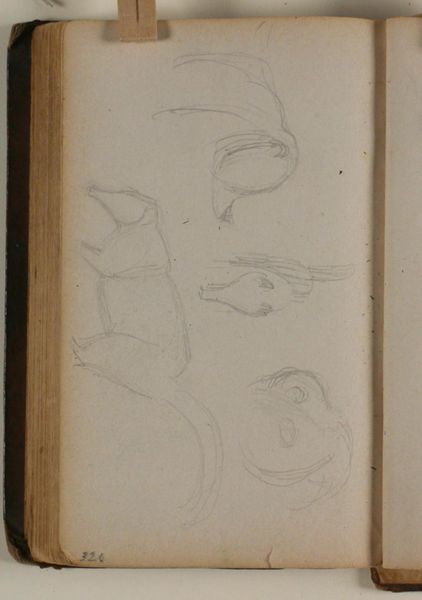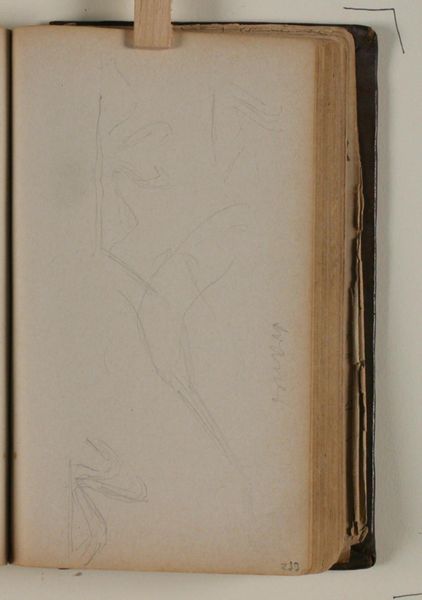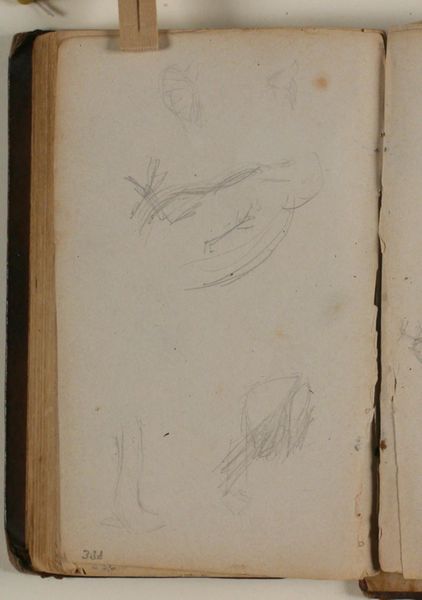
drawing, paper, pencil
#
drawing
#
landscape
#
figuration
#
paper
#
pencil
Dimensions: 162 mm (height) x 98 mm (width) (monteringsmaal)
Editor: So, here we have "Skitser af får" – Sketches of Sheep – by Niels Larsen Stevns, dated between 1864 and 1941. It's a pencil drawing on paper. They feel like quick studies, and the sheep are...well, they look a bit like blobs! I'm curious, what do you see in this piece beyond just studies of farm animals? Curator: Well, immediately, I’m drawn to the historical context. Stevns was working in a period of intense agricultural change and modernization in Denmark. These sketches, seemingly simple, are potentially infused with the changing cultural view of rural life and labor. Editor: So you’re saying there's a bigger story behind the sheep doodles? Curator: Potentially, yes. These are not romanticized, idyllic representations of the countryside that we often see in art of the period. Instead, they’re almost scientific in their brevity, quickly capturing form. Is Stevns subtly critiquing the idealization of rural life? How does this sketch differ from more formally presented paintings or drawings of livestock from that period, in terms of its intended audience and purpose? Editor: That's interesting. I guess the rawness makes them feel less like propaganda, maybe more about understanding the animals themselves, or recording them… What I still don’t fully grasp, why is this worth our time now, in a museum? Curator: It's in a museum precisely because it *isn't* a polished, finished work. It offers an intimate glimpse into the artistic process and forces us to consider the socio-political dimensions of representing labor and livestock at this time. Were rural subjects beginning to gain artistic merit because the came from a bygone way of life? Editor: Hmm, okay. I'm starting to see it. These sheep doodles are almost like a quiet commentary. Curator: Exactly! They challenge the expectations of pastoral imagery and ask us to consider the value—both economic and cultural—we assign to representations of rural life. Editor: Okay, I see your point now. I’d definitely have missed that depth.
Comments
No comments
Be the first to comment and join the conversation on the ultimate creative platform.
